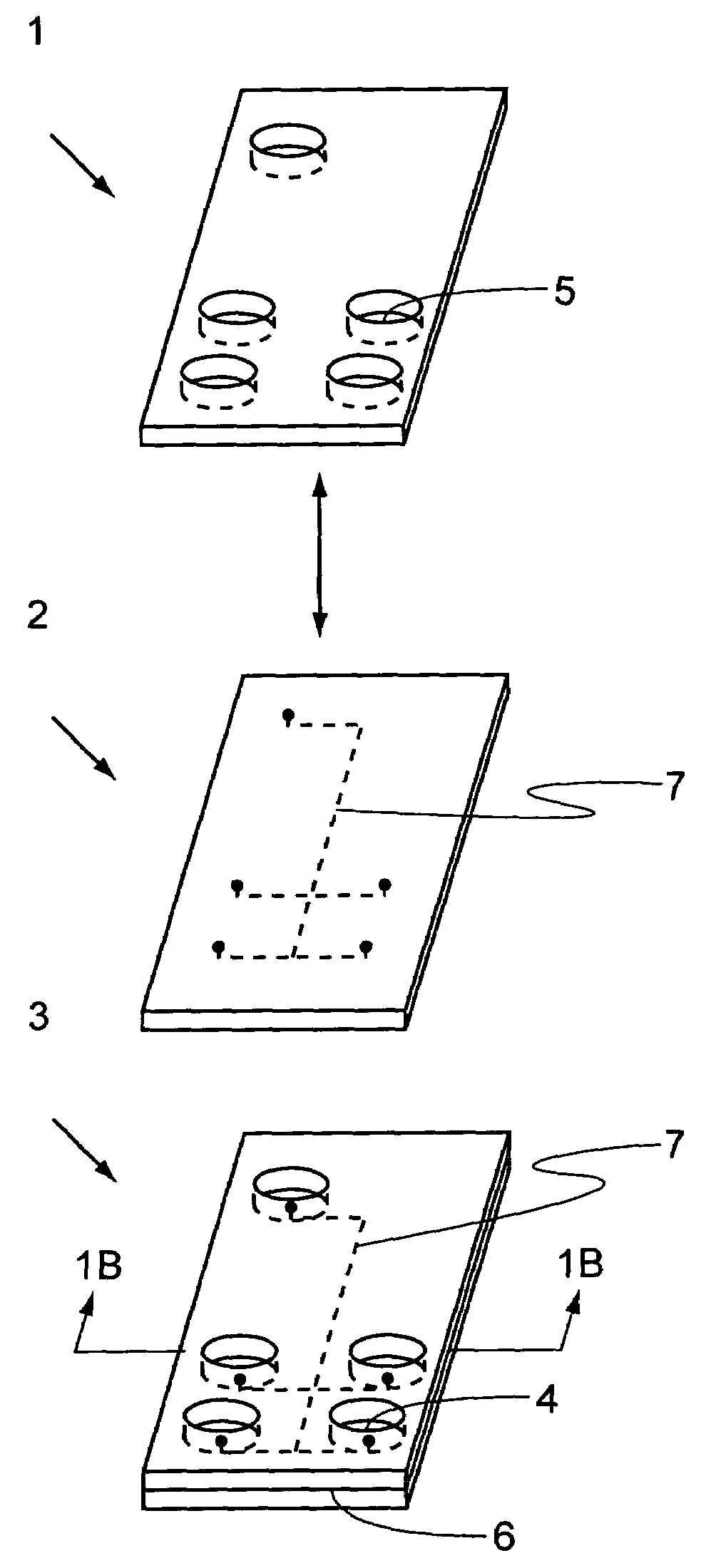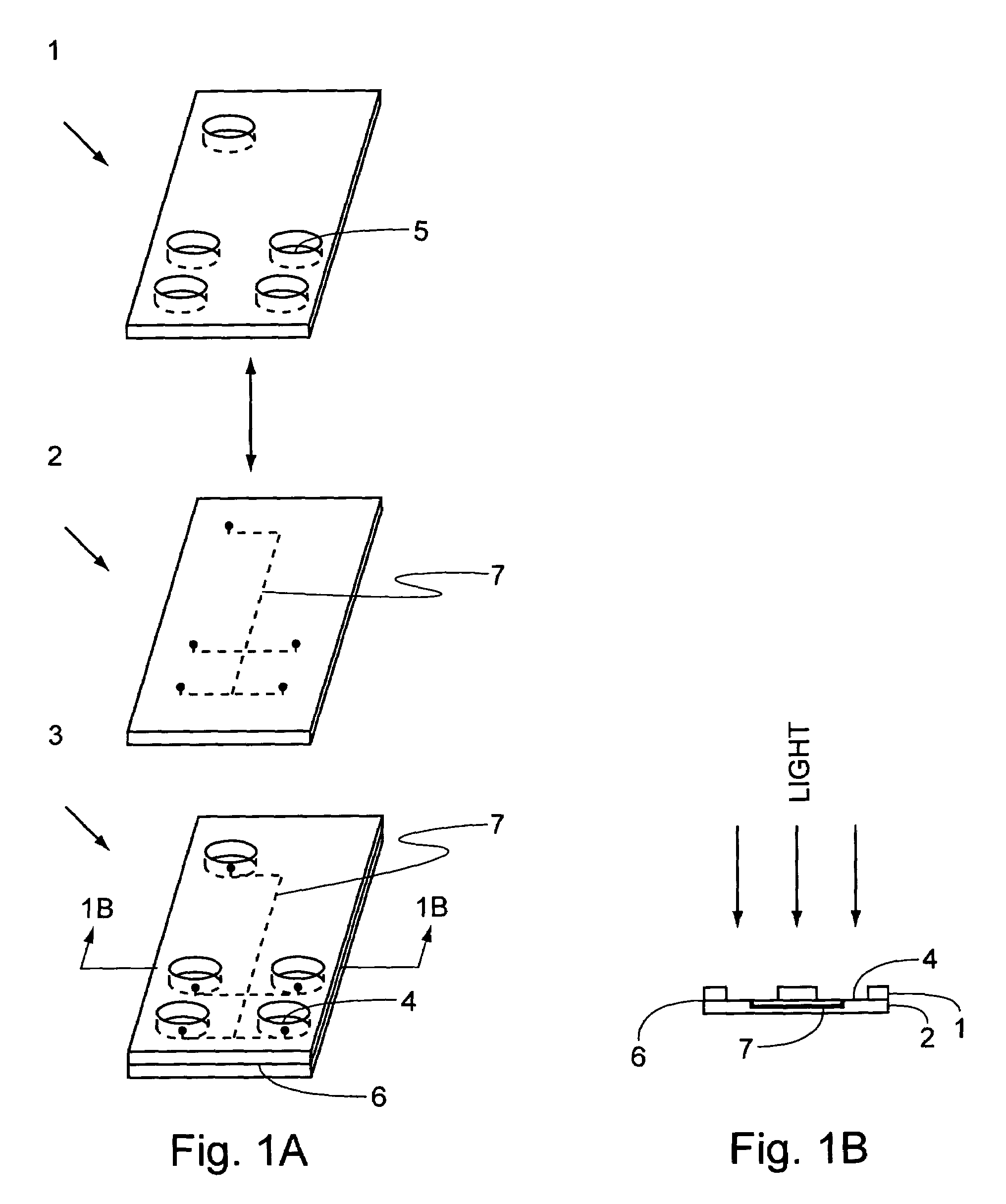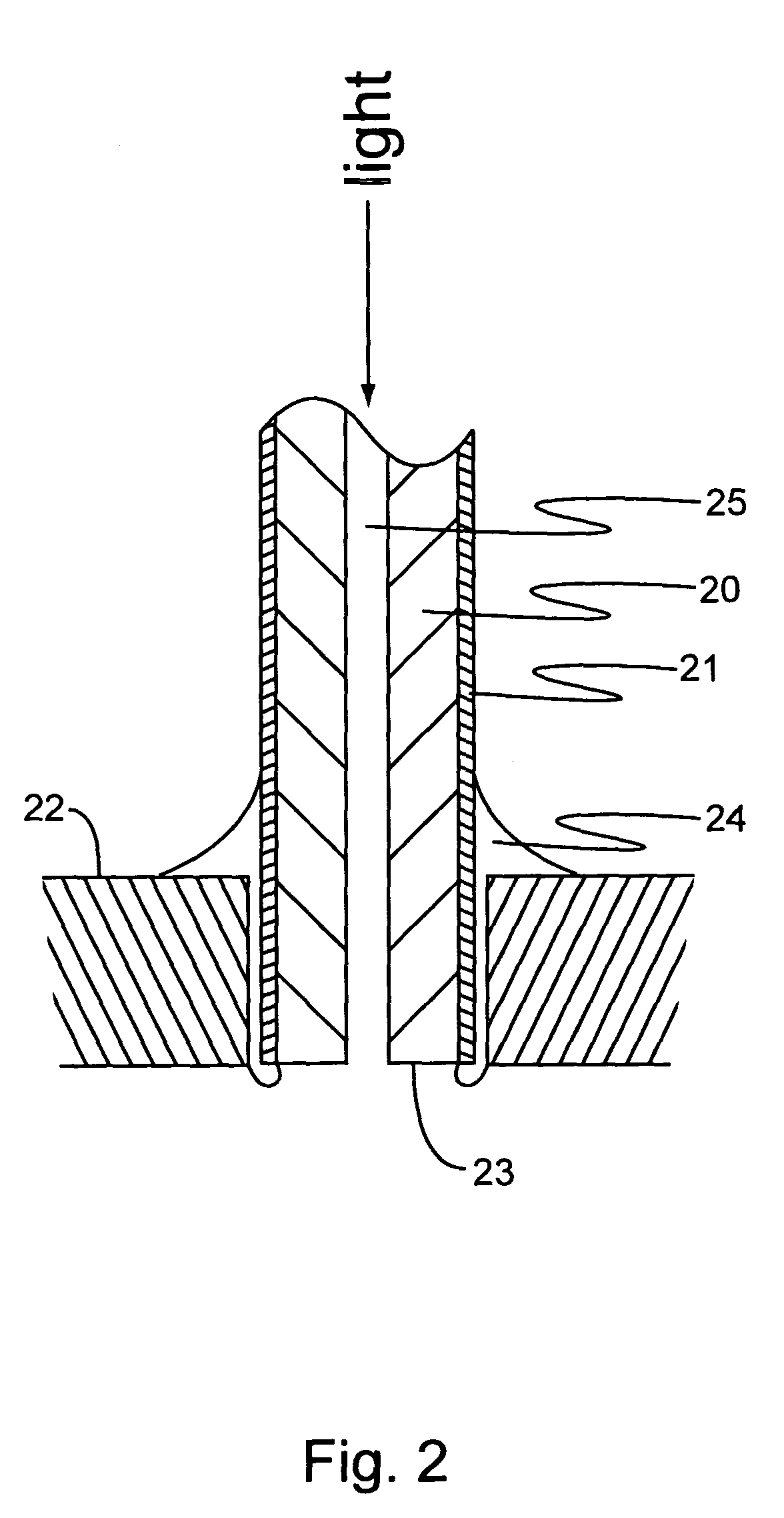Flow control of photo-polymerizable resin
a technology of photopolymerizable resin and flow control, which is applied in the field of methods and systems to control the flow of photopolymerizable resin, can solve the problems of adhesive application, spot curing, and adhesive residues that are not spot cured, and are wasteful and messy
- Summary
- Abstract
- Description
- Claims
- Application Information
AI Technical Summary
Benefits of technology
Problems solved by technology
Method used
Image
Examples
Embodiment Construction
[0024]Embodiments of the present invention provide methods to control the flow of photo-polymerizable resin on a substrate. These methods can include the steps of precisely illuminating resin exclusion regions of a substrate and flowing photo-polymerizable resin onto the substrate, whereby polymerized resin flow barriers are created at the periphery of illuminated regions. The systems of the invention include a source of light, a mask, a substrate and a photo-polymerizable resin.
[0025]In an aspect of the invention, a substrate is illuminated through a mask to form a precise pattern of illuminated regions and dark regions. Photo-polymerizable resin can be applied to fill dark regions of the substrate and to flow to the edges of illuminated resin exclusion regions. Polymerization is initiated as the leading edge of the flowing resin is exposed to light at the interface between the resin exclusion and dark regions. The leading edge is a viscous polymerized barrier that substantially pr...
PUM
| Property | Measurement | Unit |
|---|---|---|
| transparent | aaaaa | aaaaa |
| reflection | aaaaa | aaaaa |
| refraction | aaaaa | aaaaa |
Abstract
Description
Claims
Application Information
 Login to View More
Login to View More - R&D
- Intellectual Property
- Life Sciences
- Materials
- Tech Scout
- Unparalleled Data Quality
- Higher Quality Content
- 60% Fewer Hallucinations
Browse by: Latest US Patents, China's latest patents, Technical Efficacy Thesaurus, Application Domain, Technology Topic, Popular Technical Reports.
© 2025 PatSnap. All rights reserved.Legal|Privacy policy|Modern Slavery Act Transparency Statement|Sitemap|About US| Contact US: help@patsnap.com



